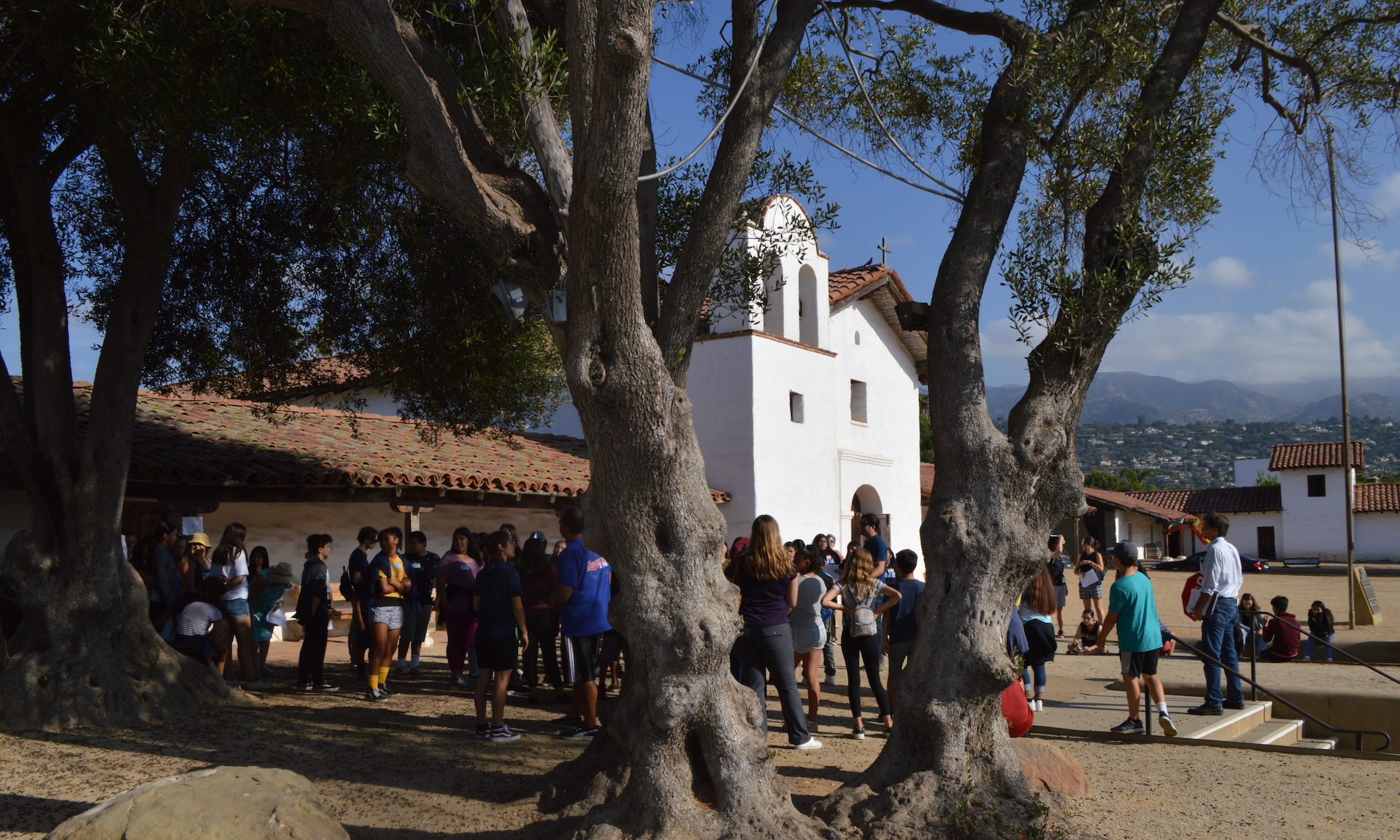By Anna Katharina Rudolph
My objective for conducting this research project was to investigate the interpretive history of Mission La Purisima using archival data and to compose a detailed report. This report will provide foundational information to assess La Purisima Mission’s past and current interpretive practices. We hope to use information gathered from this interpretive history to design new tours that focus on themes of migrations and immigrations to enhance the relevancy of La Purisima Mission as a State Park to today’s diverse visitors.
Introduction to the project:
“The most desolate ruin of all is that of La Purisima Mission. It is in the Lompoc Valley, north of Santa Barbara. Nothing is left there but one long, low, adobe building, with a few arches of the corridor; the doors stand open, the roof is falling in; it has been so often used as a stable and sheepfold that even the grasses are killed around it.”
From “Glimpses of California and the Missions” (1882) by Helen Hunt Jackson
Helen Hunt Jackson’s musings on the sheer desolation of La Purisima from her 1883 “Report on the Conditions and Needs of the Mission Indians” stands in stark contrast to the vibrant reconstruction that welcomes approximately 140,000 visitors today.[1] Referred to as “the largest and most complete historic restoration in the West” and “one of the most remarkable reconstruction projects in the country,”[2] La Purisima Mission was painstakingly restored from 1934 to 1941 through the combined efforts of the National Park Service, the State Division of Parks, the La Purisima Advisory Committee, and the Civilian Conservation Corps (CCC).[3] La Purisima is one of only two missions out of California’s twenty-one that operates as a State Historic Park.[4] It received this designation in 1963[5] and has since been interpreted to visitors as “nothing less than the complete restoration of the whole establishment as it stood at the height of its glory and usefulness.”[6]
This study traces the interpretive history of La Purisima State Historic Park from its reconstruction to the present day through the careful examination of State Park records, archival materials, CCC reports, park plans, and various publications produced by the California Department of Parks and Recreations for public consumption. The goal is to present a survey detailing how park staff have interpreted the history of this site to the public through programming, curation, exhibitions, and publications over the last ninety years. However, long before La Purisima Mission became a state park, it was a site of multivariate memories and meanings.
To derive any significance from the interpretive choices La Purisima’s staff makes today, it is necessary to fully understand how the complex history of the site has shaped the current historical perspective. As a part of the California Mission System, La Purisima exists along the intersection of multiple narratives. It simultaneously represents the story of California’s success and the story of the violence that made California what it is today; the triumph of Christian civilization over savagery and the destruction of an indigenous population’s lifeways; the heyday of Spanish colonial power and the subjugation of a vibrant culture; the heroic efforts of the self-sacrificing padres to build a new world and the oppression of the people whose unwilling labor built it for them. La Purisima Mission has always been an important part of Lompoc’s civic identity and has shaped the way the town constructs its image and engages with the tourism industry. Furthermore, Mission History has been a part of California elementary school curriculum for decades and has both shaped and been shaped by academic and popular perspectives. Through a brief examination of academic scholarship on La Purisima from the early twentieth century to the present and some recent educational materials, this study also traces some of the major historiographical and educational trends that characterize how La Purisima has been written about by scholars and taught to students. With this complex history of memory and meaning in mind, this study aims to contribute to a much broader understanding of La Purisima’s current interpretive strategies than a survey of State Park materials alone would provide.
[1] La Purisima Mission State Historic Park General Plan (Sacramento: State of California, The Resources Agency, Dept. of Parks and Recreation, 1991), 108.
[2] General Plan (1991), 45.
[3] Page & Turnbull, Inc., Historic Preservation Program: La Purisima Mission State Historic Park (July 18, 2001), 2.
[4] Deana Dartt‐Newton, “California’s Sites of Conscience: An Analysis of the State’s Historic Mission Museums,” Museum Anthropology 34, no. 2 (2011): 98.
[5] La Purisima Mission State Historic Park, Guide to the La Purisima Mission State Historic Park Collection (Lompoc: California, 2003), iv.
[6] General Plan (1991), preface.

This is only a summary. Please contact the History & Relevancy Project for more information on this interpretive history or to request a copy.
